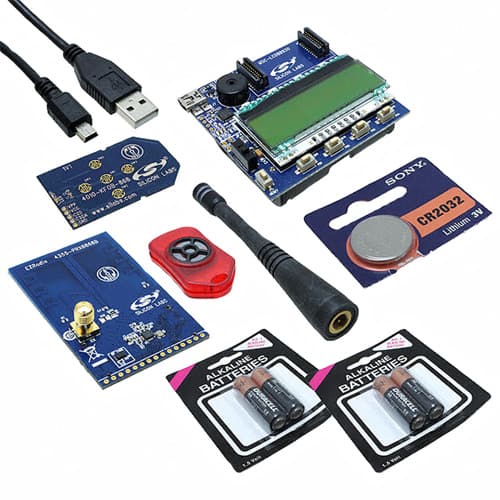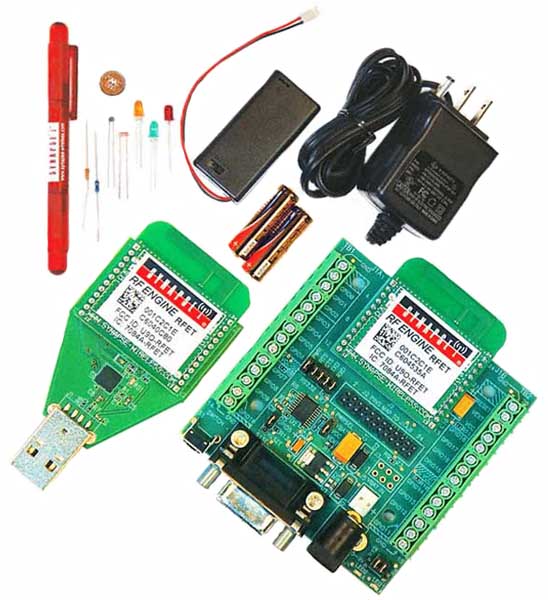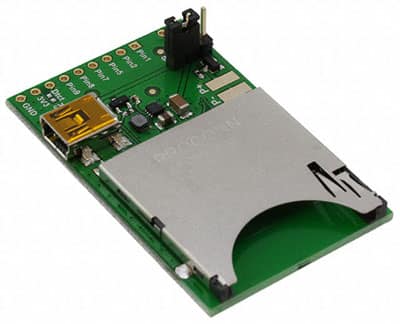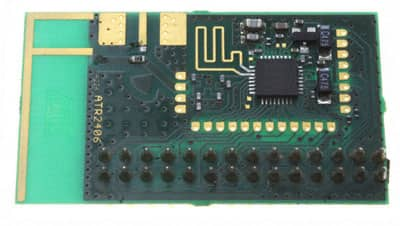Using RF Dev Boards and EV Kits to Assess Chip Features in Your Next Wireless System Design
投稿人:电子产品
2013-11-21
As the chips that support wireless communication systems increase in complexity, development boards and evaluation modules offer a quick way to check out both the chip’s performance and its functionality. The boards resolve many of the challenges when evaluating a chip for the first time since the development boards or evaluation kits already have the chip properly connected for power, ground, biasing, and input and output signal transfers. Additionally, the EV board’s physical design also provides insight into shielding and ground-plane layout to ensure the chip delivers its best performance. That can often save multiple days during the evaluation stage, therefore giving designers more time for testing.
Many of these boards include a breadboard area that allows designers to customize the board by adding a special interface, sensor, or some other circuit, enabling key sections of the system to be implemented and allowing the designers to prove out the functionality of their design. That, in turn, will minimize the risk of potential re-spins during the final system design stage.
The wide variety of development/evaluation boards for single-chip wireless LAN transceivers, FSK/ASK ISM-band highly-integrated mixer-receivers, L-band tuner transceivers, downconversion mixers, and even specialty functions such as key fob transmitters, logarithmic amplifiers, and others, provides designers with tools that can shorten their development cycles. This article will take a look at several of the higher-end evaluation kits/development boards to examine the features offered and how designers can take advantage of these features.
Evaluation kits are a popular development option since they often provide a fully-functional example of how the wireless product will be used. Silicon Labs offers an evaluation kit for its Si4010, a crystal-less system-on-a-chip RF transmitter targeted at remote-keyless entry, garage- and gate-door openers, and home automation and security applications. The Si4010 operates over the 27 to 960 MHz band and offers a symbol rate of up to 100 kbaud. The transmitter uses frequency-shift keying or on-off keying to modulate the signal and needs just one external component.
In the evaluation kit 4010-AESK1W-868, a designer gets everything needed to check out the transmitter, a remote with the Si4010 inside, as well as a receiver, antenna, USB cable, and batteries (Figure 1). Once a design gets serious, Silicon Labs also has a development kit, the 4010-DKKF-434, which includes modules for programming, debugging, transmitting, and receiving, plus all the software tools needed to program the embedded 8051 microcontroller in the Si4010. Additional modules are available for the Si4311 and Si4312 receivers (FSK and OOK), with a microcontroller, pushbuttons, and LCD display. These boards are preloaded with an example program that can receive the packets of the Si4010 Key Fob demo with AES capability.

An alternative to the Si4010 transmit-only chip is the Si4455 EZRadio Demo kit, also from Silicon Labs. The kit provides a two-way link that allows designers to evaluate the Si4455 transceiver chip. The kit comes in three versions: one for the 434 MHz band, 868 MHz, and the 915 MHz band. The demo board includes four LEDs to display information and four pushbuttons for users to initiate actions. Software bundled with the demo kit contains all the files and documentation needed by a designer to develop an application. Additionally, a range-test demo application allows users to measure the packet error rate to evaluate the quality of the RF link.
A starter kit for the Synapse Wireless mesh network, the EK2100 gives designers an out-of-the-box experience of an instant-on mesh network. The kit includes a USB-based transceiver (SNAPStick), a prototyping board, power supply, documentation, and software development tools (Figure 2). Both the SNAPStick and the prototyping board include the company’s RF Engine that executes the SNAP mesh-network firmware, which is based on peer-to-peer networking and free-form RPC calls. Included on the prototyping board are 19 general-purpose I/O terminals, a jumper-selectable RS-232 port, LEDs, and a pushbutton. The board can be programmed in a high-level scripting language that makes it an easy task to develop custom application software.

A simple and small module available from Electric Imp called “April”, measuring just 32 x 24 x 2.1 mm, packs a lot inside to reduce what designers must add to complete the system. For starters, the module includes an industry-standard 802.11b/g/n Wi-Fi interface, complete with WEP, WPA, and WPA2 encryption, as well as an antenna (Figure 3). Supporting the Wi-Fi interface is a Cortex-M3™ processor from ARM, which provides more than enough performance at a very-low power consumption level. That allows the Imp module to both maintain a secure connection to the service and also execute the developer's code in a stable environment. Advanced power management lets designers build products that can run for years from a couple of AA cells.

The Imp module also has a half-dozen I/O pins. Although there are only six pins available, the pins have lots of flexibility. They can be used to implement UARTs, I²C, SPI, analog in and out, PWMs, and GPIOs which are all selectable under software control.
Offering a serial input to Wi-Fi output, an evaluation module from GainSpan comes in two versions, one that supports just 802.11b, and another that supports 802.11b/g/n (the GS1011MIP-EVB2-S2W-WEB and GS1500M). The small modules are preloaded with serial-to-Wi-Fi firmware that supports an embedded HTTP server with Wi-Fi and IP network configuration pages, as well as limited AP capability for easy provisioning. The modules are designed to plug into microcontroller development kits available from Renesas for its various MCU product lines.
Although it is not Wi-Fi, a tiny RF transceiver module from RF Solutions can be programmed for the 433, 868, or 915 MHz ISM wireless bands and offers a range of about 300 m, while delivering/sending data at up to 100 kbits/s. The SmartAlpha Eval board can be used in one-to-many or many-to-one system configurations, and multiple connection options allow the board to connect to a PC or act as a machine-to-machine link via USB or RS-232 interfaces.
Targeting the 2.4 GHz ISM band, the ATR2406-based development board from Atmel can communicate at data rates ranging from 72 to 1,152 kbits/s. Targeted for use in high-tech multi-user toys, wireless game controllers, telemetry systems, wireless audio/video, point-of-sales terminals, and other applications, the board simplifies system design by packing an image-rejection mixer, low I-F filter, FM demodulator, RSSI, TX preamplifier, power-ramping generator for an external power amplifier, integrated synthesizer, and a fully-integrated VCO and transmit filter. Thanks to the high level of integration, the eval board design becomes rather simple, requiring just a few low-cost components (Figure 4).

There are many options for designing ISM-band or Wi-Fi RF transceivers. For ISM applications Analog Devices has the ADF7023 multiprotocol single-chip transceiver (ADF7023 dev kit) and the ADF7901 OOK/FSK transmitter chip, Anaren offers the A1101R09A module (A1101R09A eval kits), Maxim offers the MAX7032 ASK/FSK transceiver (7032 eval kits), and Semtec has the SX1212 FSK/OOK transceiver (SX1212 eval kit), just to name a few examples. There are also many other RF system functions available on various demo and evaluation boards. Check with DigiKey or the vendor to determine your options.
For more information on the parts and dev boards discussed in this article, use the links provided to access product pages on the DigiKey website.
免责声明:各个作者和/或论坛参与者在本网站发表的观点、看法和意见不代表 DigiKey 的观点、看法和意见,也不代表 DigiKey 官方政策。






